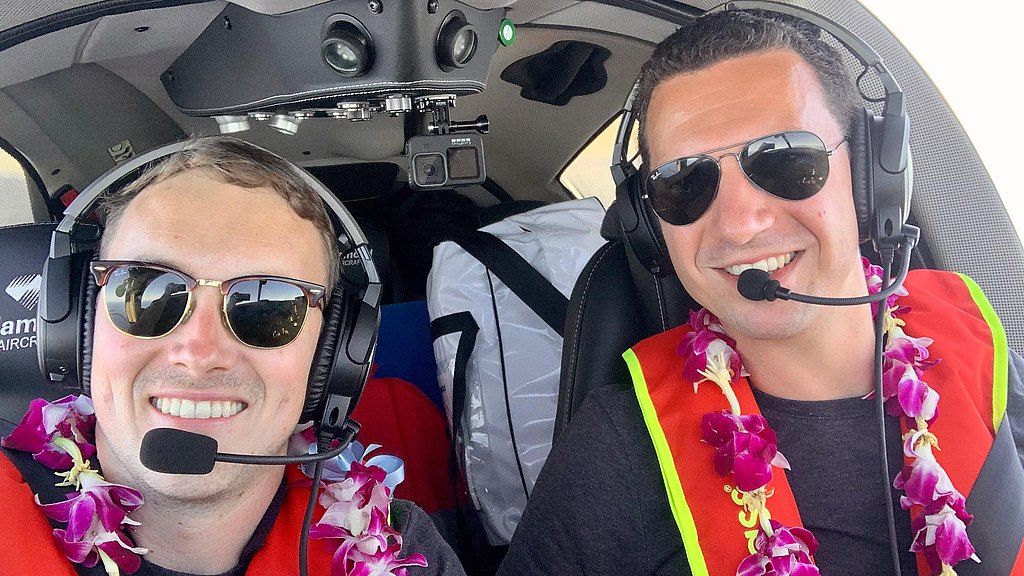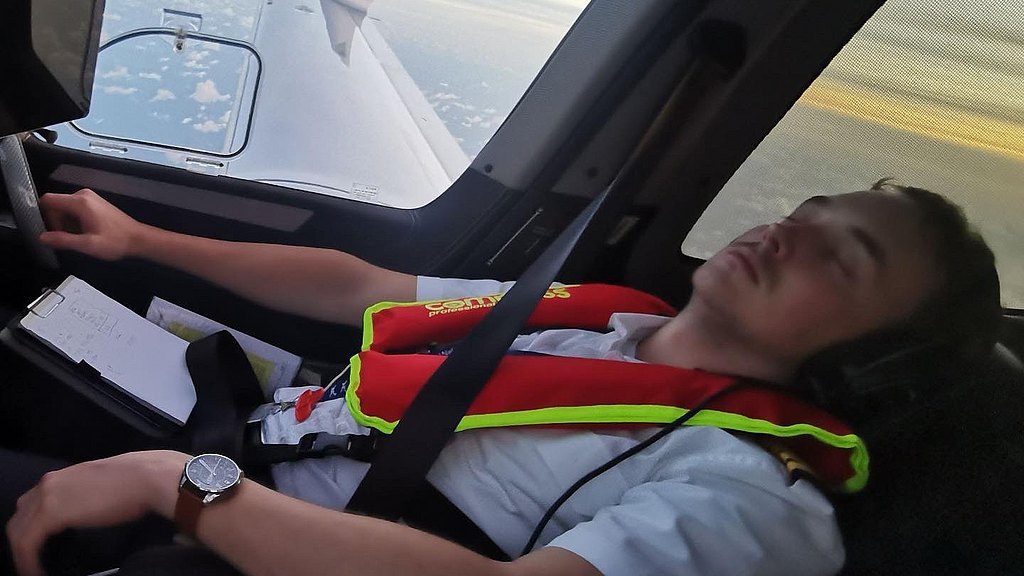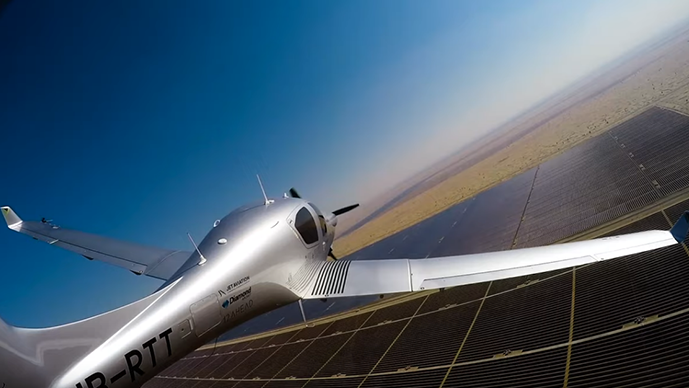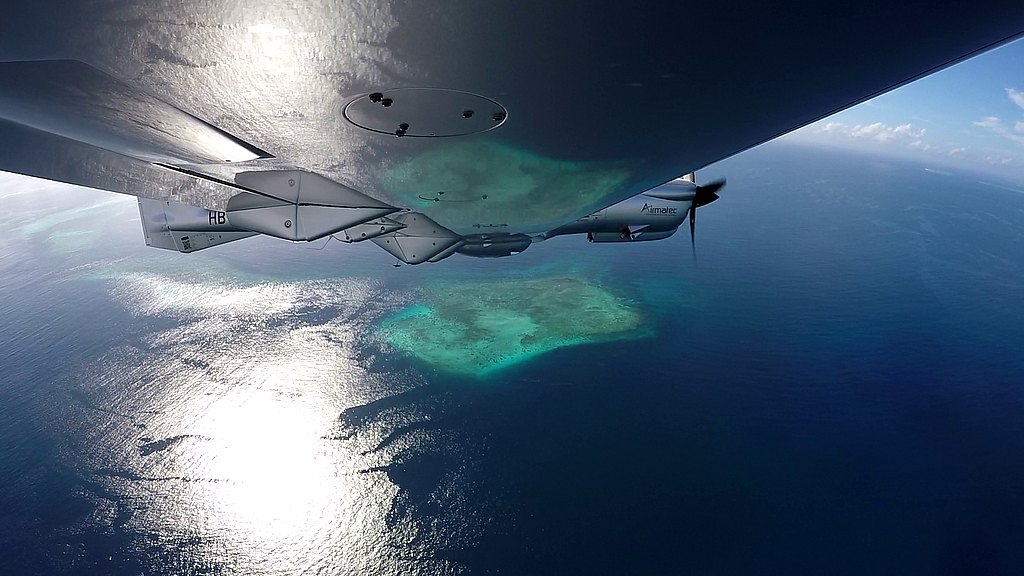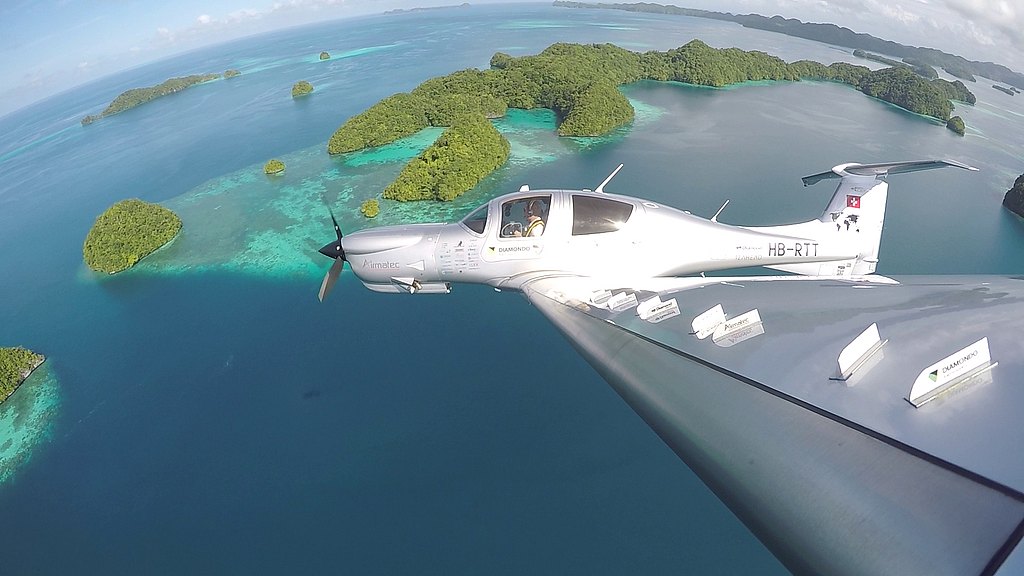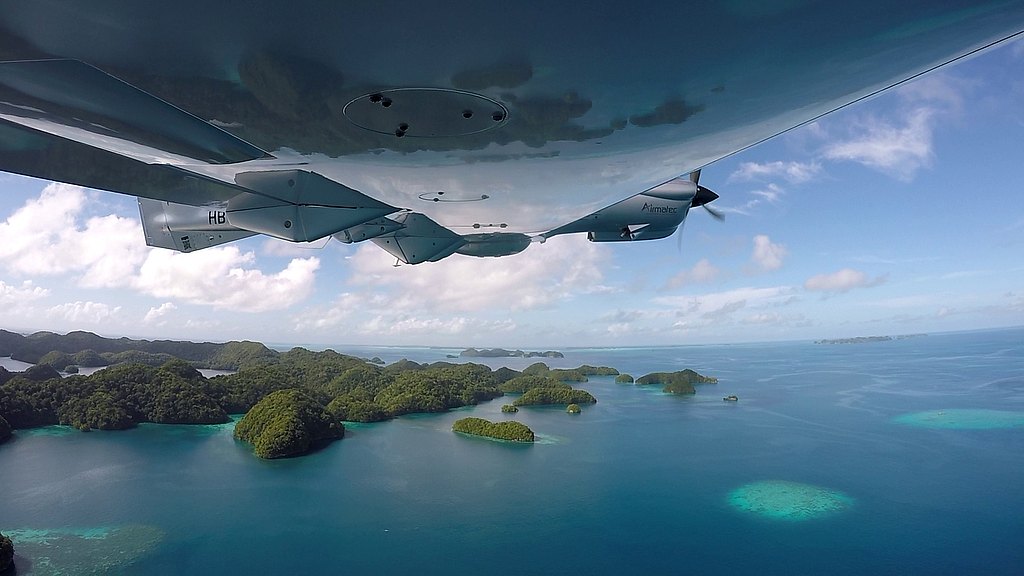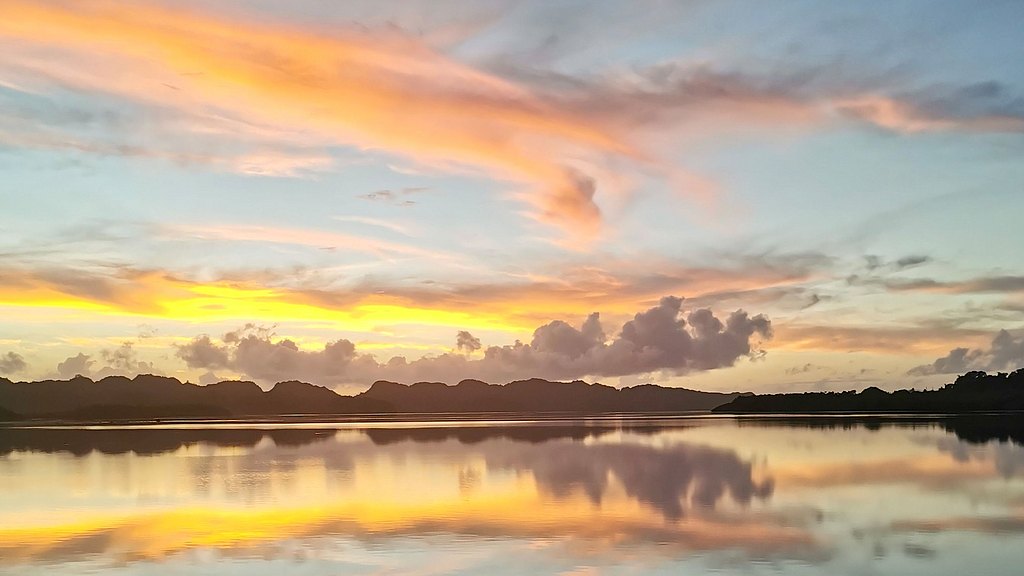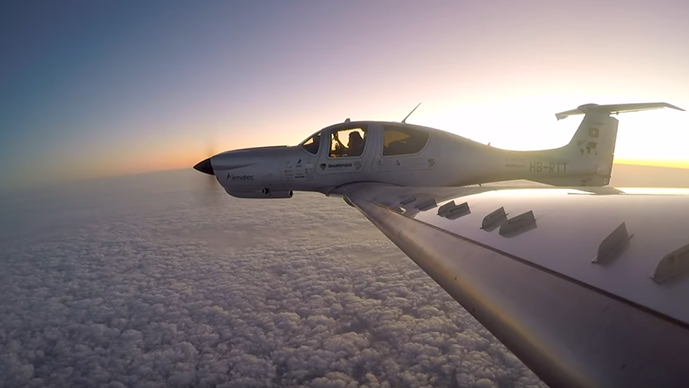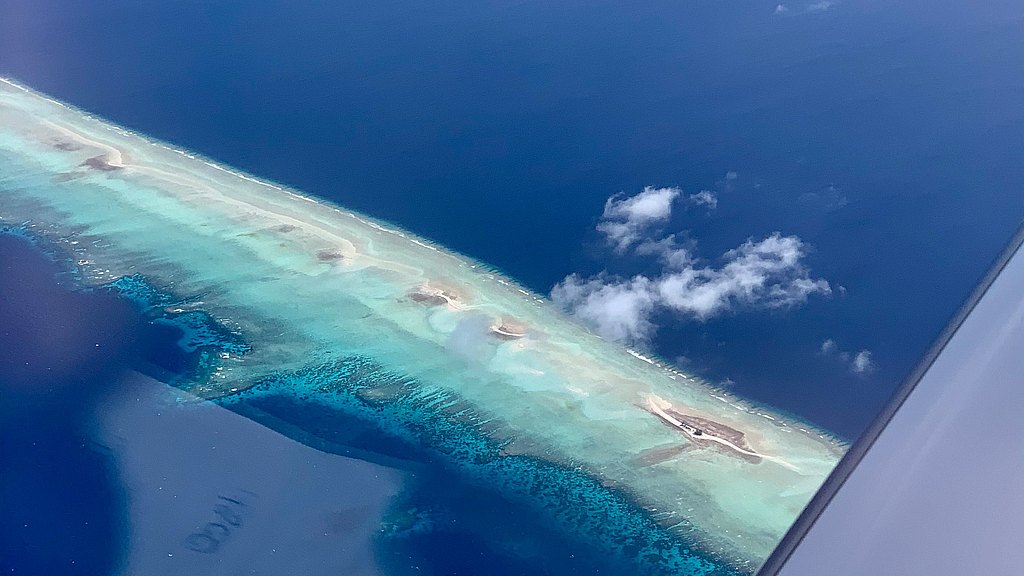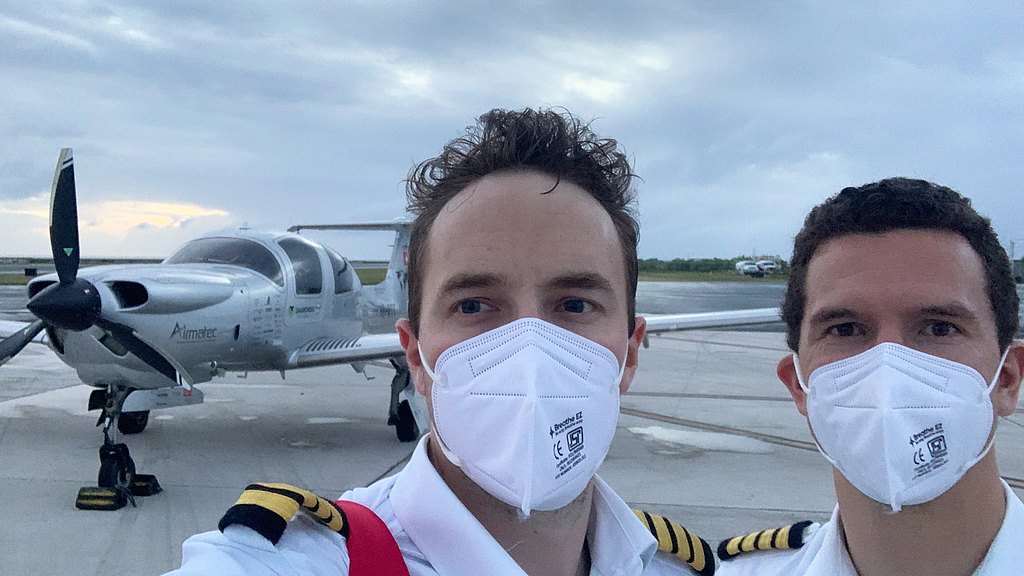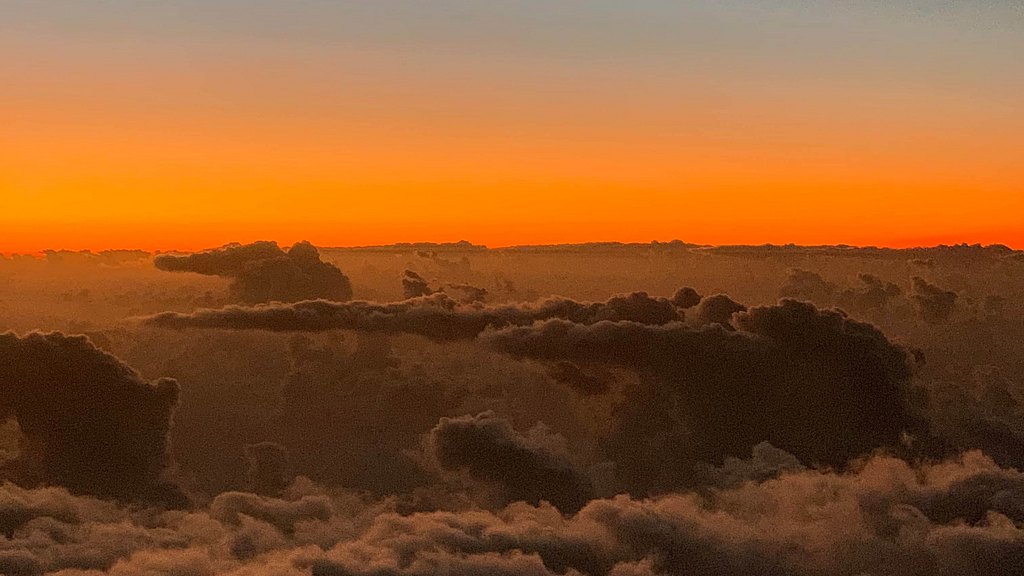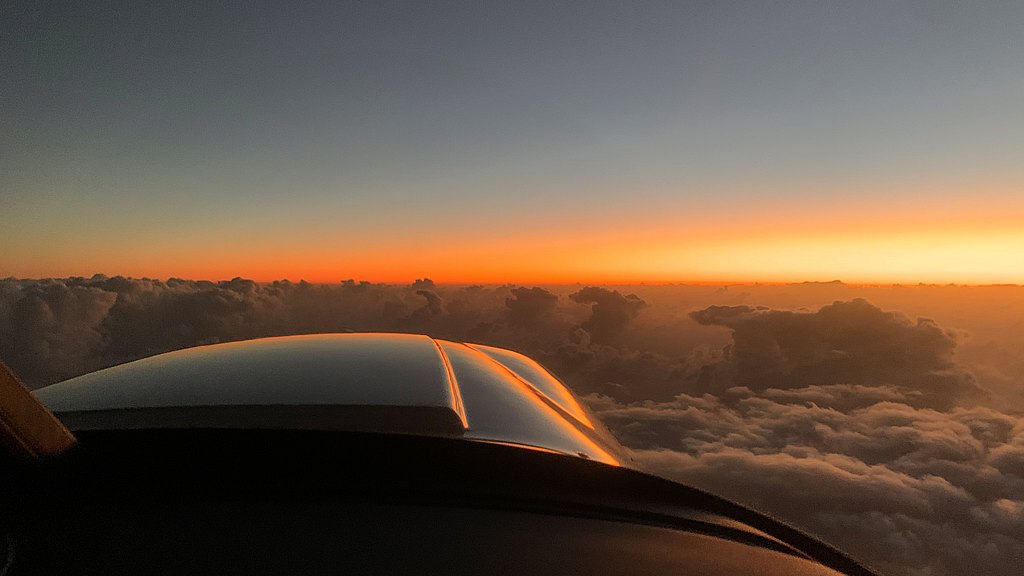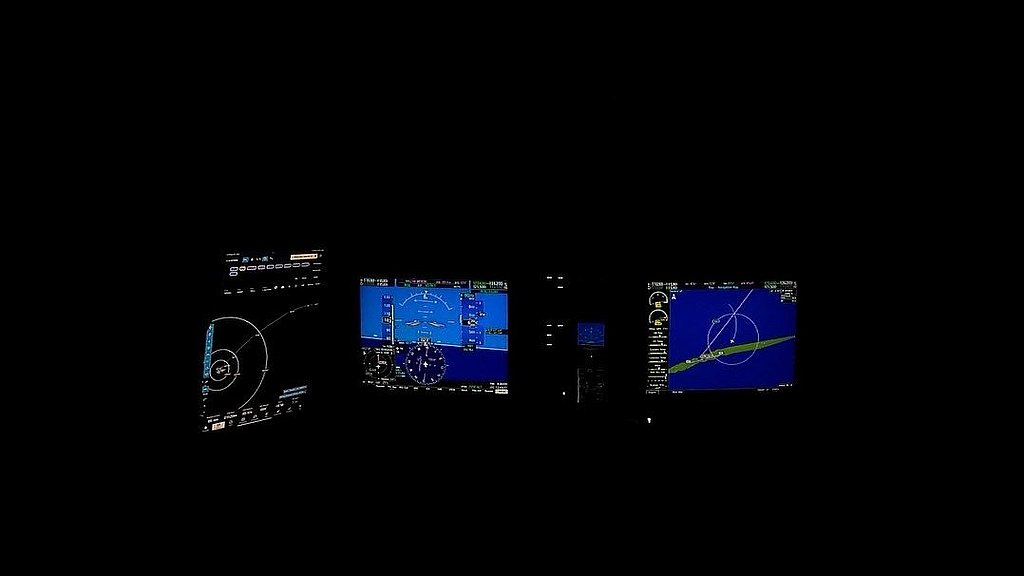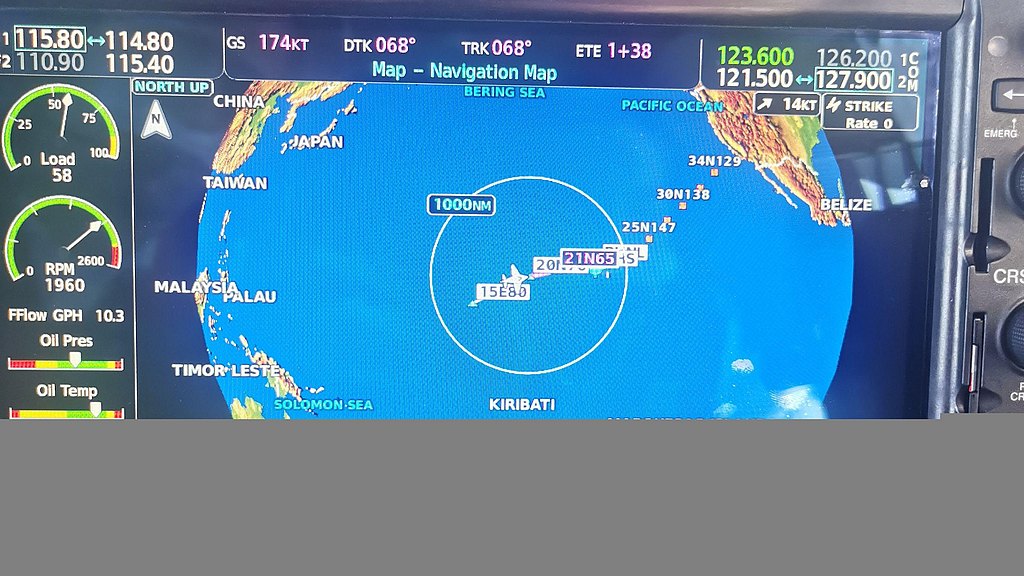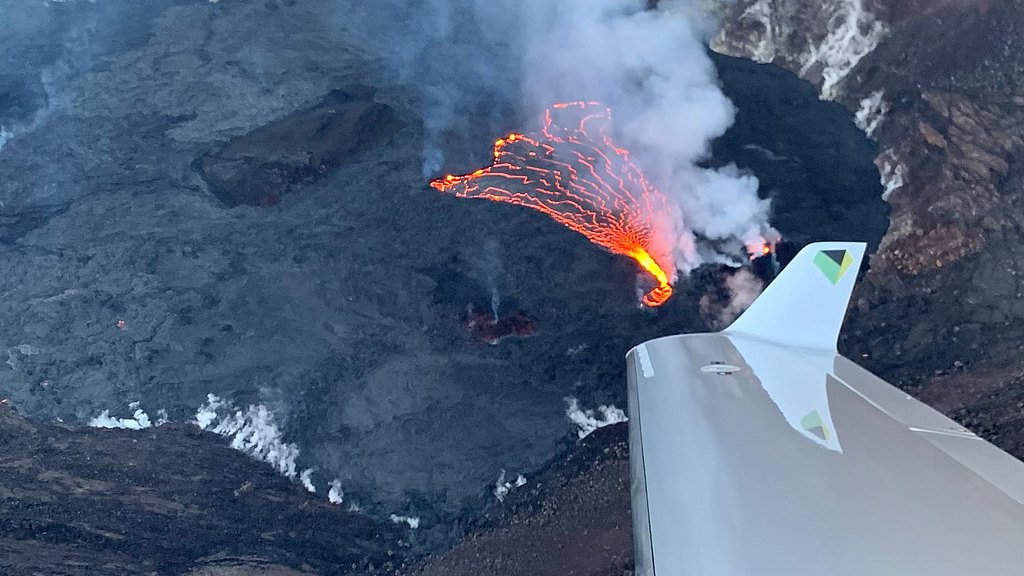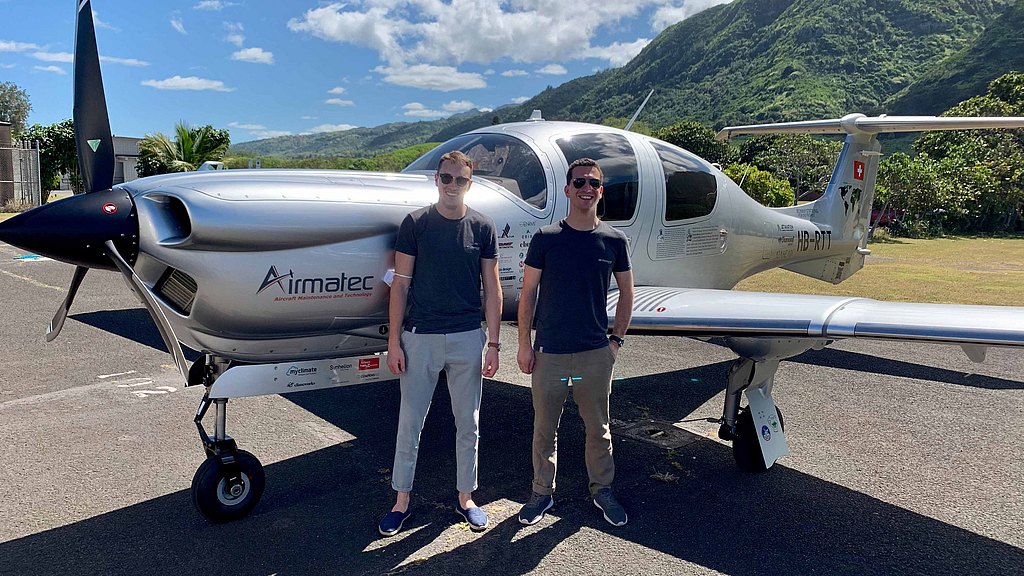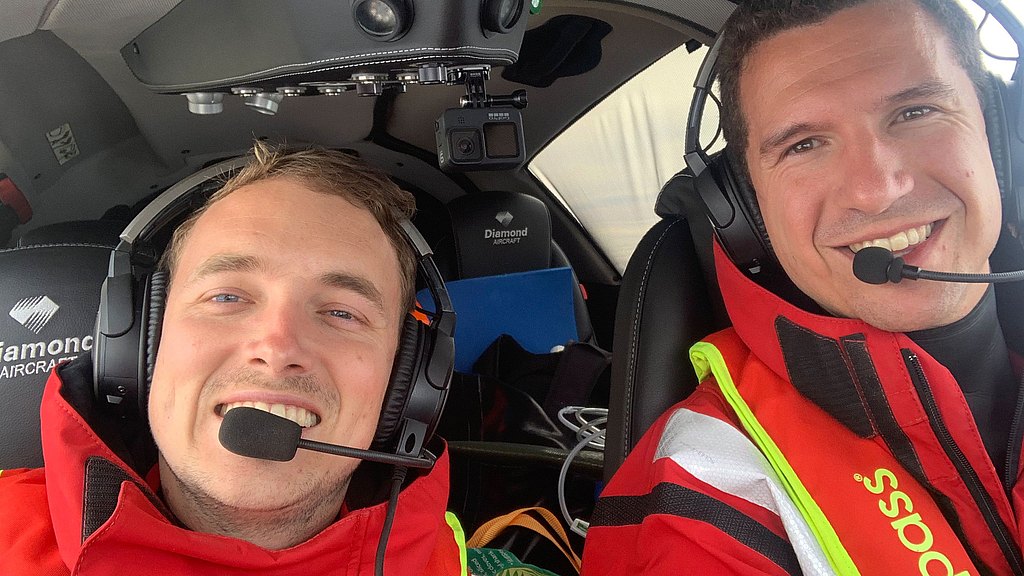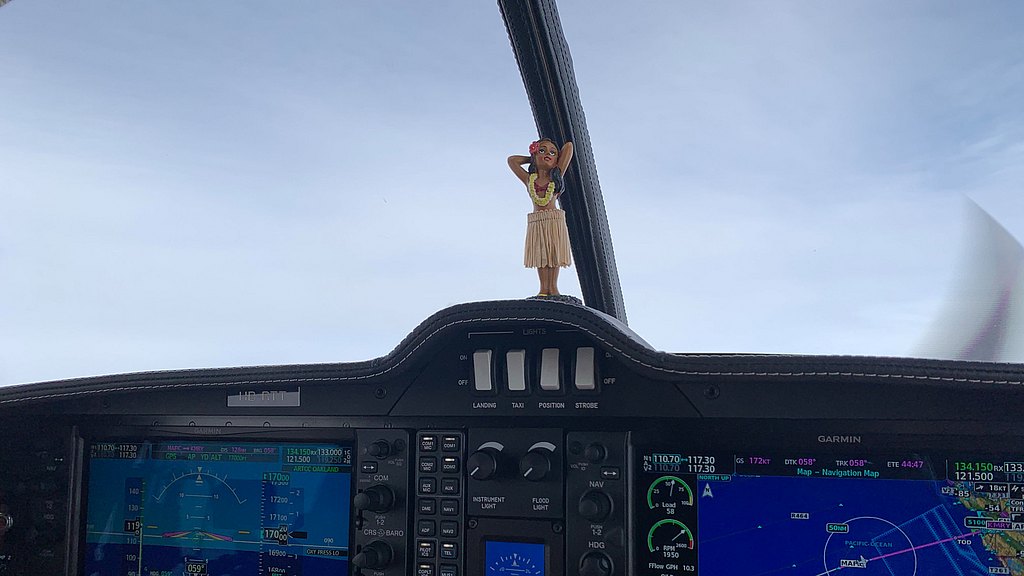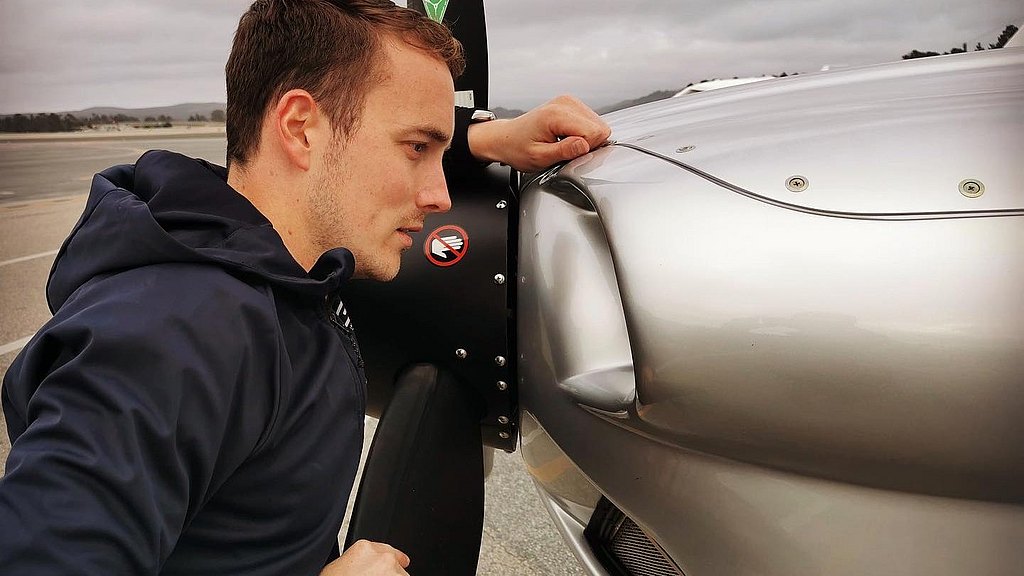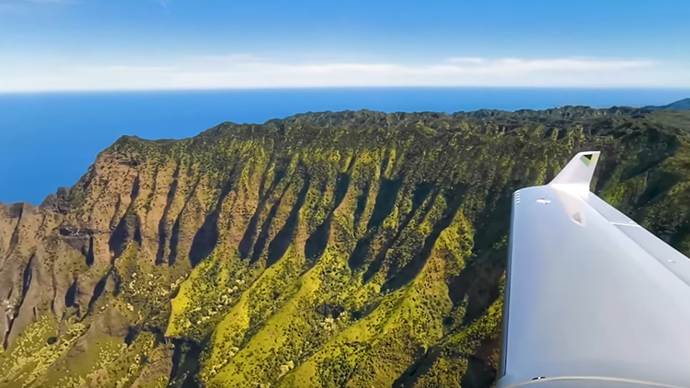First off, and even with the ferry tanks installed to extend the DA50’s range, the crew relied on the islands and atolls of the Pacific to stay within the safe limits of their aircraft. Respecting also Covid entry restrictions in place in certain locations, the Diamondo team decided to cross the Pacific from Malaysia to Palau and onwards to Guam. From where they flew to Majuro on the Marshall Islands and further to Hawaii before completing the crossing with their longest leg from Hilo to California, measuring over 2000 nm or 3700 km. A total of five flights which the crew decided to conduct over the span of three weeks. Apart from granting the crew enough rest, it also offered flexibility to decide on the best days to fly in terms of weather.
Inflight, the pilots took turns napping. This allowed them to keep their focus for the portions of the flight where it‘s most required. And such a phase came early on their Pacific Crossing, right after overflying the Philippines. Mission Support of SWISS, keeping a watchful eye on the DA50’s progress by using satellite based ADS-B and updating the pilots through Garmin Connext’s messaging function, informed the pilots during the “Hourly Ops Check“ of the existence of a SIGMET (significant meteorological phenomena). The SIGMET called for embedded thunderstorms laying between the crew and their destination, Koror. Especially as the sun was setting and daylight faded, the crew decided to deviate 25 nm North of their track to try and remain well clear of the area in cruise.
The satellite weather uplink through GARMIN Connext allows the pilots to display SIGMETs on the DA50‘s G1000 NXi map, which made them base the 25 nm track offset on. As they approached Koror, the crew started their descent which brought them closer to thunderstorm activity again. Navigating through the dark, the pilots used the built in stormscope to detect and avoid zones with lightning on their approach to the island of Palau where they landed safely after over 11 hrs in the air.
After resting on the island of Palau for three nights, the crew flew a relatively short hop of 5 hrs to Guam. From Guam, the crew would more or less cross half the Pacific in two consecutive legs, which would test both the endurance of crew and aircraft. Departing Guam (PGUM) at 2 am LT, Robin and Matt set a South Easterly course headed for Majuro (PKMJ) and saw the first of two sunrises on February 9th.
While the choice of destinations in the Pacific was dictated heavily by the pandemic, the layover on Majuro, on one of the 29 atolls of the Marshall Islands, remarkably displays what consequences climate change beyond 1.5 degrees C and the corresponding rise in sea levels would have for the nation, which’s avg. elevation only rises a mere 6 ft above sea level. And while aviation continues to play a crucial role in connecting the islands and atolls, the necessity for it to become more sustainable is evident.
Due to quarantine requirements in Majuro, the crew made only a 7 hrs technical stop. After more than 12.5 hrs in the air and with the next leg expected to be closer to 14 hrs this was of course not ideal, yet simply the only feasible option the crew found after having spent more than a year planning their crossing of the Pacific.
After being able to rest a few hours on the ground in Majuro (PKMJ), the crew departed shortly past midnight on February 10th into the pitch black night sky above the atoll. The synthetic vision on the G1000 NXi avionics facilities the crew in maintaining situation awareness in these conditions.
Matt and Robin took turns napping in the first 5 hrs and after crossing the International Date Line at 15N180E, the crew traveled back in time before witnessing the second sunrise on February 9th. After a light breakfast, it was oxygen cannulas on for the two, to climb from FL090 to FL170 and after headwinds on the first third of the leg, make use of the tailwinds at higher altitude. Diamondo flight dispatcher David actually planned a 50 nm longer route, compared to the great circle distance, which however ended up being quicker and more fuel efficient due to favorable winds.
Approaching Honolulu (PHNL), the Air Traffic Control (ATC) had its difficulties with the unfamiliar HB-RTT callsign, so the DA50 RG was referred to as „Helicopter Bravo Romeo Tango Tango“ a couple of times, which lifted the mood of Robin and Matt after more than 13 hrs in the air and over the Pacific waters. Latest when ATC asked Robin and Matt to slow down to not get too close to the preceding traffic, they stopped referring to the DA50 as a rotorcraft.
To minimize the distance from Hawaii to California, the flight crew positioned the DA50 RG to the eastern most airport on Hawaii, which is Hilo (PHTO). As with the wind patterns between them and the US West Coast there was no reason for rushing into the final leg over the Pacific, the crew took their time to make their way over to Hilo from Honolulu.
Changing from pilot uniforms into the Diamond t-shirts for the upcoming Island hoping, was a welcoming change for Robin and Matt. The crew departed Honolulu over Pearl Harbor Westbound to Port Allen (PHPA) on Kauai. After cruising along the Napali Coast, the crew flew back to Oahu to eat lunch close to Dillingham (PHDH). The airport, well actually the runway‘s dimensions, stuck to Matt‘s head ever since landing aircraft into it as a kid playing flight simulator (the RWY is 2745x23m, which looks incredibly long and narrow on arrival).
While for the long legs over water the autopilot is engaged for most of the flight, Matt and Robin use these shorter hops to practice their Stick & Rudder skills by hand flying the DA50 RG, which is a ton of fun. After touring the southern coast of Big Island searching for lava, the two found it close to their destination Hilo at Kilauea Volcano. Apart from seeing the lava glow, the crew also overflew areas where it met the Pacific on previous outflows. All in all, we are amazed with the beauty of Hawaii‘s nature.
After waiting 12 nights in Hawaii, the crew filled both the DA50 RG wing tanks and added fuel to the bladder tank fitted and secured on the rear seat row. This made the range of HB-RTT adequate for the flight laying ahead, over 2000 nm to California.
Departing into the night sky at half past midnight LT, SWISS Mission areas of precipitation laying in the flight path. As temperatures were negative Celsius at their altitude (FL130), Robin & Matt made use of the assigned Block Altitude, basically a vertical band they could maneuver in along their route, and descended 2000 ft to FL110 where temperatures were positive again.
After another sunrise over the Pacific, the crew kept receiving favorable hourly updates from Mission Support indicating the updates of the Wind Components for each of the segments would provide the crew with the anticipated tailwind push. At their final cruising altitude of FL170, temperatures kept decreasing as they approached California, and reached as low as -16°C before top of descent. Same was observed in forecasted water temperatures in the Pacific and thus the crew was prepared for the unlikely case of a ditching in cold water by wearing the survival suits for the entire leg.
Luckily with the low temperatures at altitude, the suits did not bother the crew all that much as can be seen by the two smiling shortly before passing 10,000 ft on their arrival into KMRY. Perhaps the smile could also come from Matt & Robin spotting land and being close to completing the Pacific Crossing, which after an RNAV Y approach and landing on KMRY‘s RWY 28L 13 hrs after their departure became a further milestone reached.
As many of you know, there is a saying in aviation that the engine does not know it‘s flying over water. So after landing in Monterey, Matt told the Continental Engines CD-300 what it just has flown over for the last 50 hrs in service. And what a reliable partner the engine has been. No strange vibrations, sounds or indications, just a reliable and fuel efficient power plant, taking the DA50 RG safely over our planet’s largest body of water!
Some final words today on SAF: To fly the long legs over water, the energy density of liquid fuels was crucial. A very rough comparison - not taking into account the weight/size of the powerplant & storage system: using hydrogen, the DA50 aircraft would require 4x more space to store it, with current battery technology, the batteries would be 60x heavier than the jet fuel or SAF the crew is uplifting. While many initiatives prove zero emission aviation is achievable, especially for smaller aircraft, it will likely take decades until similar performance figures can be achieved as with liquid fuels & even longer until worldwide fleets are replaced with emission-free aircraft. For aviation to make a timely impact, mid-term solutions such as SAF are therefore required; solutions which can propel present day aircraft.
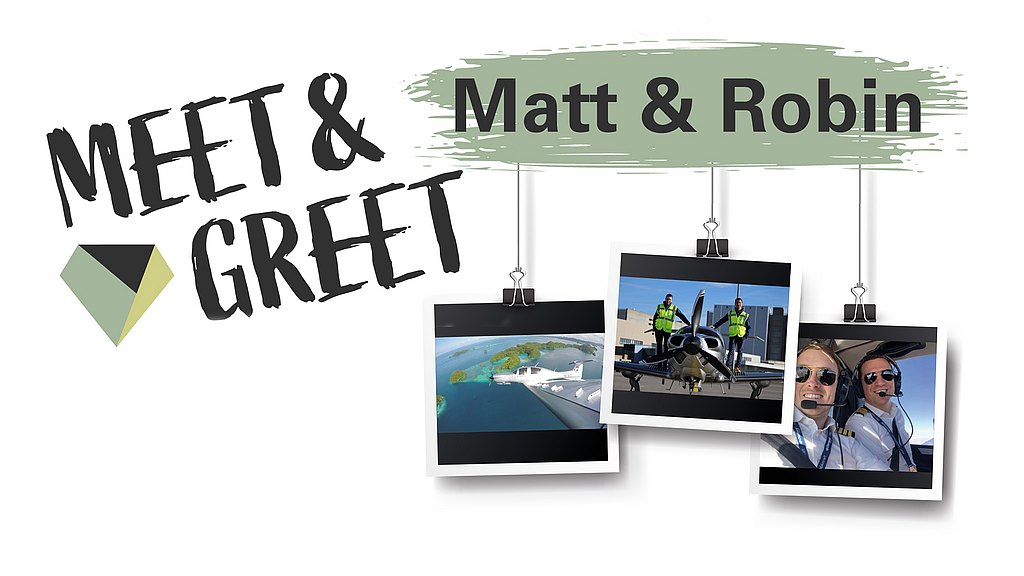
Meet our Swiss friends Matt & Robin from Diamondo Earthrounding
The first pilots to circumnavigate the world in a DA50 RG! Straight from a trip around the world, they’re flying their DA50 RG to Friedrichshafen. Ask Matt & Robin everything you want to know about their journey around the world, sustainable aviation and their experience with the DA50 RG.
When & where?
AERO Friedrichshafen, Germany
Saturday, 30 April from 1-3 pm
Next to our DA50 RG at our booth, no. A4-120
Where to follow their journey
If you are interested in their exciting journey, here is where you can follow Robin & Matt:
Disclaimer: The views and opinions expressed in this article are those of the author(s) and do not necessarily reflect those of the Diamond Aircraft Group and its employees. The Diamond Aircraft Group is not responsible and does not verify for accuracy of any of the information contained in the article. A liability or guarantee for the topicality, correctness and/or completeness of the provided information and data is excluded. Diamond Aircraft Group is not liable for direct or indirect damages resulting from the use of the information or data found on this website/ blog. There are no rights and obligations between Diamond Aircraft Group on the one hand and the user of the website or third parties on the other hand. This declaration applies to all links on this website.
Share your story with us!
Do you have a Diamond story, pictures or video to share for our #DiamondDiary? We'd love to hear from you at airmail@diamondaircraft.com.
